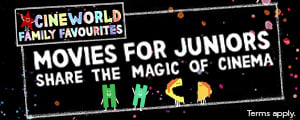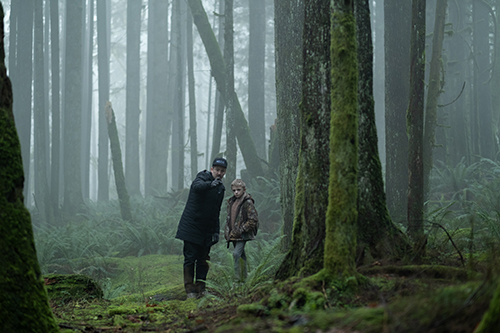
Creepy new horror movie Antlers arrives in Cineworld cinemas in time for Halloween. Expanded from Nick Antosca's short story 'The Quiet Boy' (Antosca also contributes to the screenplay), the film explores a working-class Oregon community variously beset by drug addiction, social upheaval and a demonic menace.
Keri Russell (Star Wars: The Rise of Skywalker) plays teacher Julia who becomes convinced that one of her troubled young students, Lucas (newcomer Jeremy T. Thomas), is harbouring a dark secret. Said secret is intrinsically tied to the terrifying Native American myth of the wendigo, a diabolical and deadly spirit. Jesse Plemons (The Irishman) co-stars as Julia's police officer brother Paul, with whom she shares a harrowing childhood trauma.
We were delighted to catch up with the director of Antlers, Scott Cooper, to discuss his collaboration with writer/producer Guillermo del Toro (The Shape of Water) and the notion of what it means to be haunted.
This movie plays around with the malleability of the word 'haunted', in that you can be haunted by societal deprivation, a Native American spirit or something else entirely. Was that concept important to you when making the movie?
Oh, absolutely. For many people, the scariest part of the movie will be about generational trauma. There's also the sight of a young boy shouldering a trauma that he's far too young to deal with. There are two audiences for this film. Some might come because it's a horror film and it's monster-centric. And then, of course, there are those who are looking for something a bit deeper with their horror films.
I think the scariest movies hold up a mirror to America's fears and anxieties. We're dealing with an addiction crisis, systemic abuse, and abuse to Native Americans, which has endured for well over 400 years. We're also dealing with a climate crisis. All of those things are percolating in this film. And then, of course, there's the generational trauma. To your point, I think it works on a couple of levels as to what the horrors are really are.
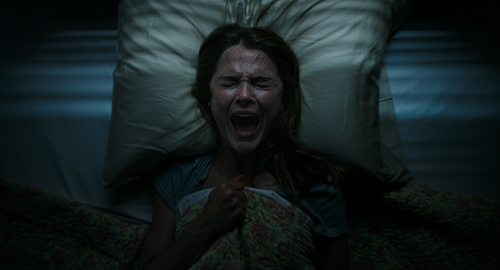
A lot of your movies have exposed horrors in American society, whether it's the rust belt in Out of the Furnace or the foundations of modern America in Hostiles. Would you say that America is intrinsically a haunted country?
No question. America is a nation founded on wonderful ideals of liberty and democracy and government. But it's also a nation that's founded on genocide and slavery. One cannot forget that. There was a gentleman running for President who subsequently became President and said, "Make America great again." There are many who would question, when was it ever great? But there are many great things about being American. It is, however, a country stained by blood and tragedy.
You incorporate the Native American myth of the wendigo into the movie. Was this something with which you were familiar?
Yes, ever since making Hostiles, Native American culture, not to mention the abuses they have suffered, has been important to me. When Guillermo del Toro asked me to consider directing this, I was well aware of what the wendigo meant to the Native Americans and the First Nations.
I enlisted Grace Dillon, a professor and one of the foremost experts on wendigo mythology. She explained to me that the wendigo can manifest itself in many ways. Firstly and foremost, it is always a spirit. So I then took that as the spirit of lonely places, like the fictional town created for the film. The wendigo represents a stand-in for all the issues that people would rather not confront.
Out of that is born this creature, some might say a god, that reflects our own demons and feeds off our worst attention. It was a universal metaphor, be it a metaphor for addiction, Native American suffering, those others who have been colonised or people who are living with pain, the sort of pain that lives within all of us. In the town depicted in the movie, the wendigo is everywhere. You can't get away from it.
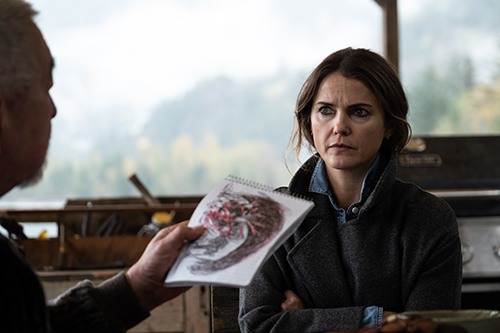
Aside from your film, the only other exposure I'd had to the wendigo mythology was Algernon Blackwood's story, 'The Wendigo'. It's a masterful tale, surely one of the most terrifying ever written.
Yes, absolutely it is. I did discuss that with Guillermo and with Nick Antosca, who wrote the wonderful short story 'The Quiet Boy' on which Antlers is based. As I started to work on my drafts, aiming to work on all the issues you and I just discussed, it felt important to look at that particular story by Algernon Blackwood, and I did wonder how the wendigo would be interpreted by certain people.
I always felt that our wendigo represented a couple of things. It's the destruction of our natural resources. In the film, the exoskeleton is made out of the Earth's crust. Ore, coal, the Earth's mantle. And of course it's also a metaphor for the destruction of our bodies, which may well come through addiction or abuse. Keri Russell and Jesse Plemons' characters in the movie have suffered abuse. And Keri's character sees that reflected in this young boy, Lucas. She recognises the abuse that he's enduring. In trying to understand help him, in turn she wants to save herself.
You mentioned the character of Lucas there, played by Jeremy T. Thomas who, I have to say, is amazing in the film. Where do you find such skilled child actors?
Well, he wasn't an actor, that was the thing. Neither is the young boy who plays his brother. We saw, maybe, 900 boys for the part of Lucas. All of them were camera-ready and I wanted someone who had never even seen a film camera. I felt he could represent the themes of the story and I also thought he could embody the haunted nature of Lucas with very minimal dialogue. He did it beautifully. First actor or not, it's one of the most touching, heart-wrenching performances I've ever directed.
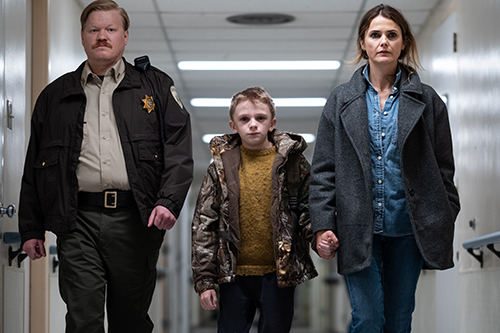
This is the first supernatural monster that you've made. Guillermo del Toro has of course made lots of movies in this area. What was the nature of your collaboration with him? Did you share conceptual ideas?
Guillermo came to me and said, "Your last three films have been horror films, and nobody noticed." He then asked me to consider making Antlers. Some of my earliest filmic experiences were horror, actually. My much older brother exposed me to them! It is my first supernatural horror movie but I wanted it to be a grounded experience. Even if it wasn't a wendigo, it would work as a horrific experience, just on the level of familial abuse and addiction.
Guillermo was incredibly generous with his time and his ideas. Every draft that I would write, he would weigh in, and likewise with the creation of the wendigo. He was incredibly helpful with his ideas. He understands the process of making a creature far better than I do. Once you're in the cutting room, so often you and your editor become snowblind. You've lived with the cut for so long. It's always nice to have other people to come in and take a look.
Guillermo was always a wonderful resource, and even if he's not starring in the film, I often have Christian Bale come in as well. He did that here and he's so great with both story and performance. He suggests things that might need to be sharpened or things that are best left unsaid. It really takes a village.
Were there any particular horror movies that made an impression on you at a too-young age?
Certainly, the very first Halloween by John Carpenter. Nicholas Roeg's Don't Look Now, which I think I saw for the first time on LaserDisc, or maybe VHS. It's such a powerful movie about trauma. I would say one, in particular, would be Ridley Scott's Alien; Ridley produced my movie Out of the Furnace. It's one of the great horror movies. There's also a really strong heroine in the form of Ripley. I wanted that resourceful and strong quality to be present in Keri Russell's character in Antlers.
It's also to do with the creature itself. I often feel that the less you show something, the scarier it is. You allow your imagination to run amok. Those films, and also The Exorcist, in terms of dealing with the supernatural in a very grounded way. Shared grief is a topic that courses through my films, and if you look at The Exorcist, it's not only a horror movie but it's a supernatural detective story. William Friedkin's use of those terrifying effects was. certainly back in the early 1970s, utterly masterful. What really struck me about that movie, and also Don't Look Now, is that I watch it as a parent and I'm struck by the level of realism. That's what makes it disturbing.
Is it true that you have to earn those moments where you see the monster? Because Antlers shows a certain level of restraint in that area.
I do think so. I hope that's effective for people. One of the fears is that people will want more jump scares or more of the monster. I set these three macro goals for myself when I set out to make the film. I wanted it to be disquieting, I wanted it to be tense, but most importantly I wanted it to be human at its centre, even though there is a monster.
I thought that by waiting and bringing in the monster at the end of the film, people will know what it represents, not only in the film in a thematic sense, but also in terms of what it means for the viewer. I think horror films are for people who are interested in the darkness inside themselves, but who don't want to face or confront it directly. They can escape into a theatre, surrounded by people, and they're able to see elements of their lives reflected on the screen.
I understand that this is a dark and, at times, grim film, but there are so many overlooked people in our society who live with these types of horrors every day. People need to be reminded of that. This movie has a very Hobbesian world view of life as nasty, brutish and short. And it is for a lot of people.
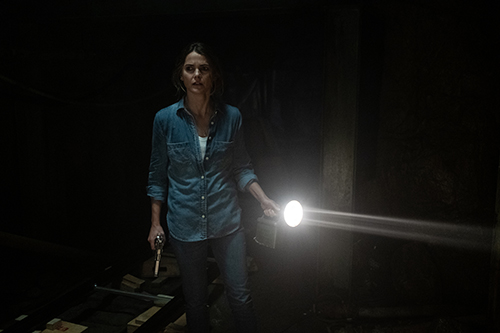
You also have a score from Javier Navarette, who won an Oscar for Guillermo del Toro's Pan's Labyrinth. Did you direct Javier to build the score like a lullaby?
I loved what he did with Pan's Labyrinth. That film also deals with a young child and the supernatural. Guillermo agreed that Javier would be a remarkable person to score this. Javier understands both the humanity of the situation and also the darkness.
We had a lullaby in the score that reminded us of childhood, where it's Keri Russell's childhood, Jesse Plemons' childhood or Jeremy's childhood. That plays counter-intuitively against the grimness and darkness of the film. I hope that it came across in very subtle ways but also in ways that enhance the film, rather than detract from it. So often I find, particularly in horror films, that scores are doing a lot of the heavy lifting that the narrative and performances ought to be doing.
Well, it's fantastic that the movie is finally out there now, 18 months after its initial planned release date.
Oh, I'm so thrilled that people are finally getting to see it. And I'm more thrilled that people are getting to see it as I intended: within a darkened cinema. Horror really plays best when you're surrounded by strangers in a theatre, all of whom are hoping to be transported. I don't know if this film plays nearly as well at home. I hope that everyone can see it on the big screen when the time arises. Like all of my films, it won't be for everyone, but a great director once told me, after seeing my second film, "Scott, if everybody likes your film, it's likely not very good." [laughs]
Click here to book your tickets for Antlers, released in Cineworld cinemas on 29th October.
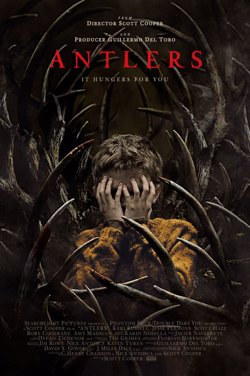



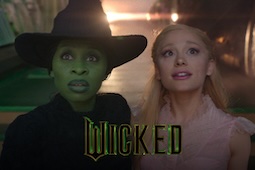





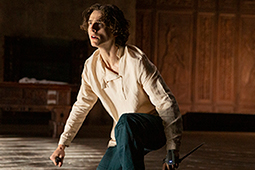
.jpg)
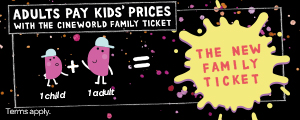

.jpg)
.png)


